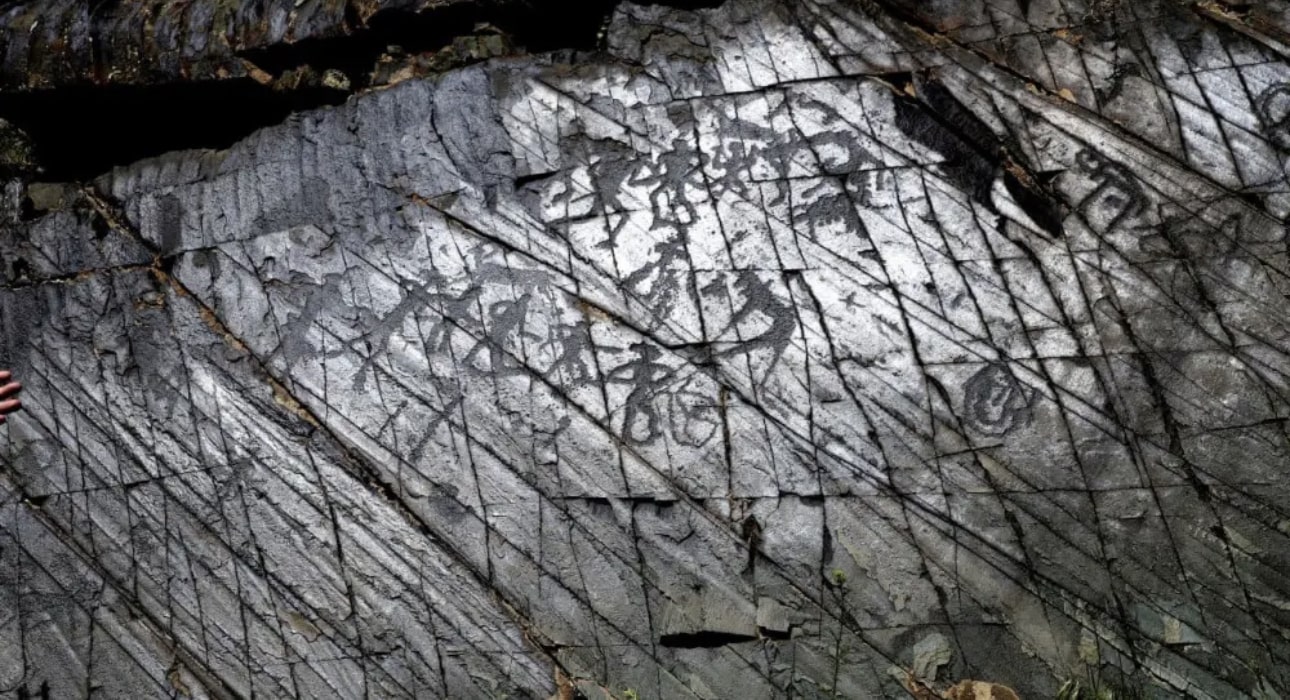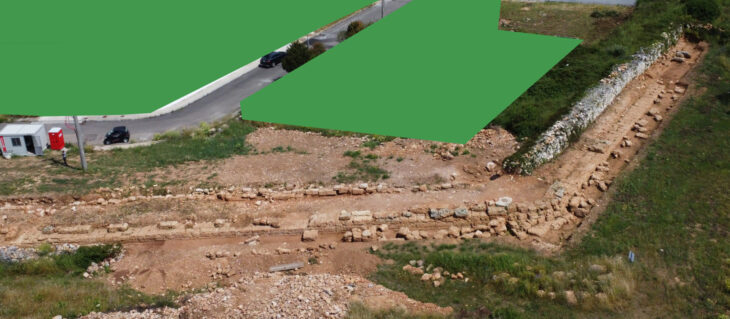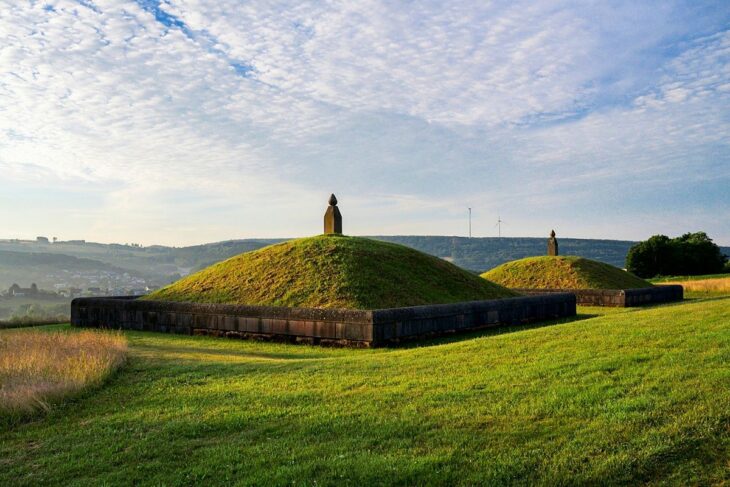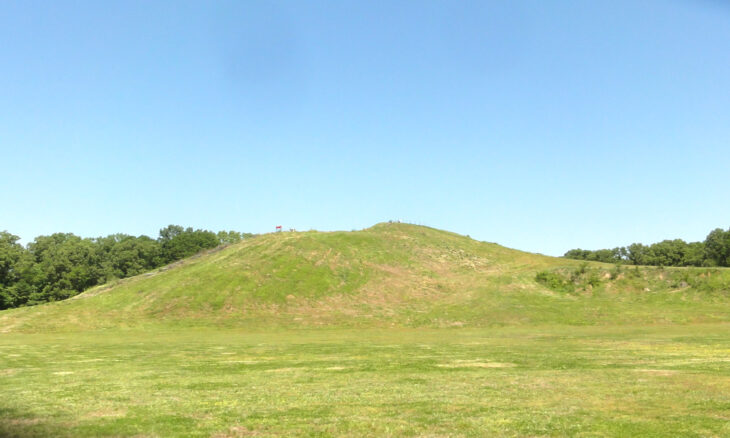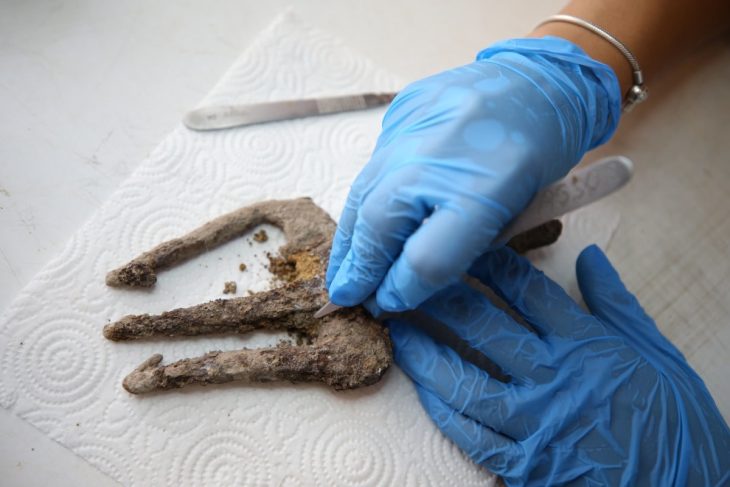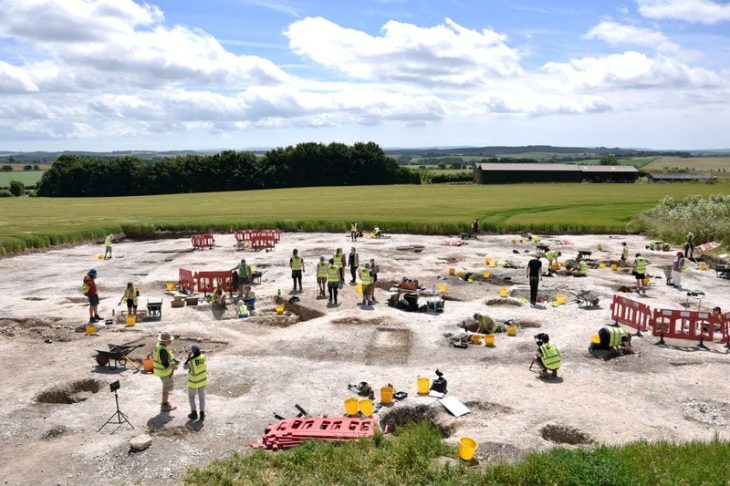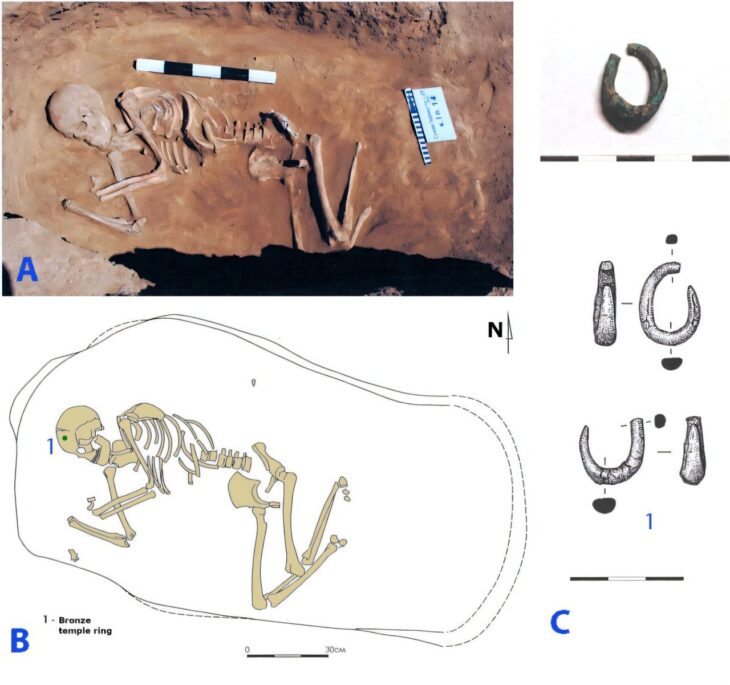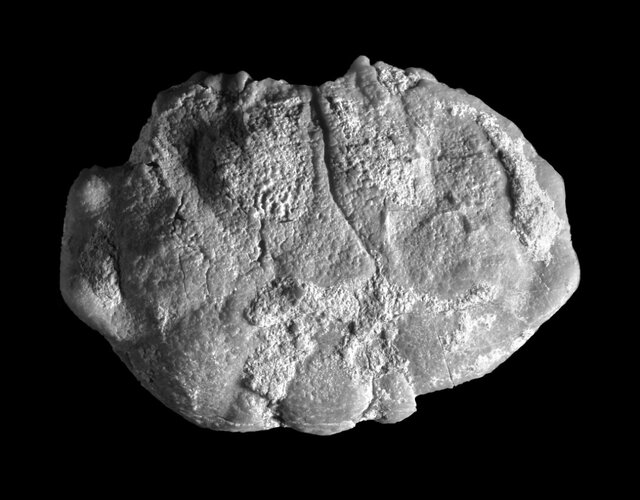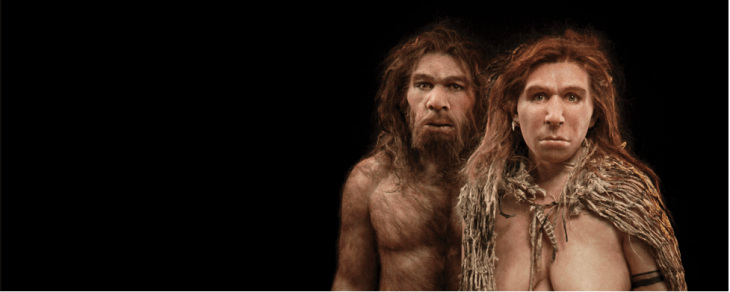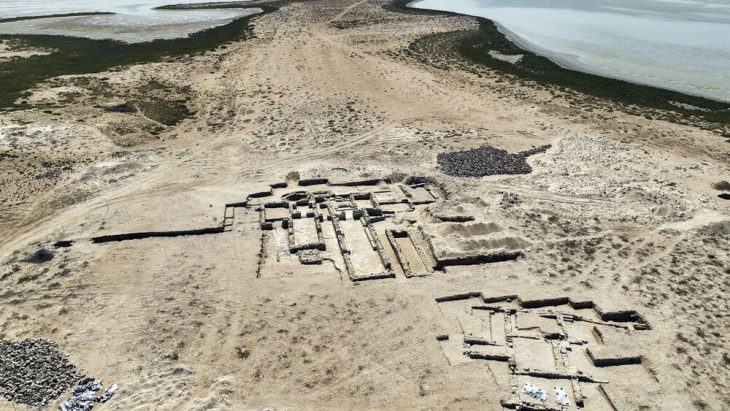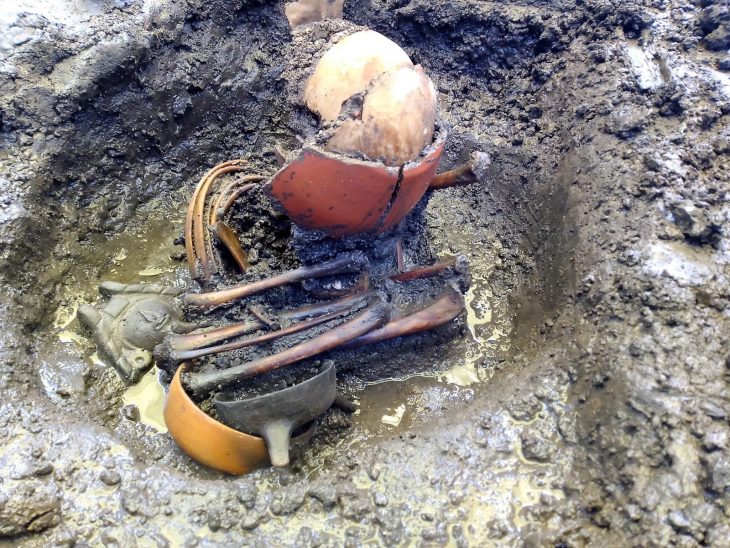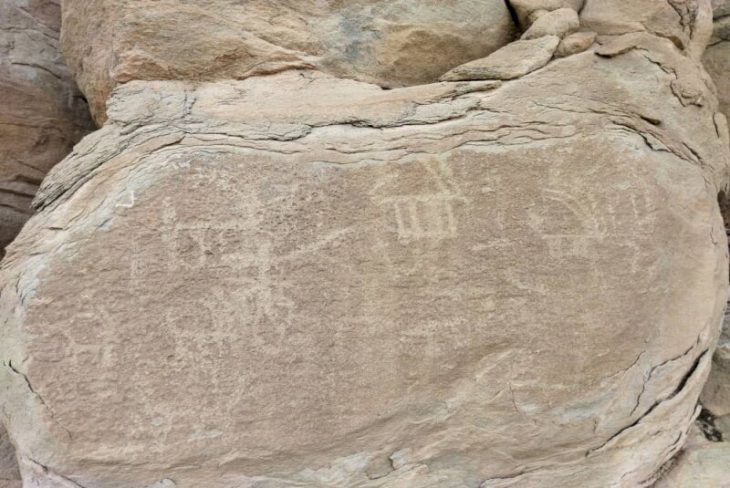Volunteers in Kazakhstan have discovered new petroglyphs from the Bronze Age. The rock carvings were found by volunteers of the nationwide Taza (Clean) Kazakhstan environmental campaign in the Zhambyl region.
Around 3.5 kilometers from the Aktogay village in the Sarysu district, at the foot of the towering ridges, were where the rock carvings were discovered during the second week of the campaign, which was devoted to landscaping efforts around historical and cultural monuments.
The height of these ancient drawings reaches two meters, and the length is more than 15-20 meters. Most of the petroglyphs depict the daily life and worldviews of people of that time.
“We stumbled upon very unusual drawings, and to understand their significance, we sought the expertise of archeologists. We hope this discovery will shed new light on history,” said volunteer Assylzhan Pazylbekov.
Experts estimate that the petroglyphs date back more than 4,000 years. However, local archaeologists need support to pinpoint the exact date to which the petroglyphs belong. Unique features etched onto the pictures’ surface are regarded as a significant finding. Scientists plan to start a thorough investigation of the rock art as a result.
📣 Our WhatsApp channel is now LIVE! Stay up-to-date with the latest news and updates, just click here to follow us on WhatsApp and never miss a thing!!
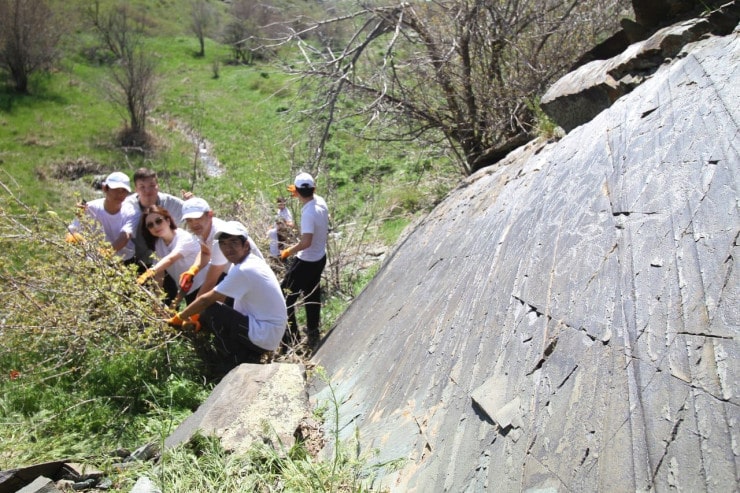
Discovering an artifact with abundant images on one surface is rare for the Zhambyl Region. These types of rock art were found and studied at sites including Arpaozen, Koibagar, Sauyskandyk, Eshikolmes, and Tanbaly Tas.
Southern Kazakhstan’s Karatau Mountains are home to rock paintings known as petroglyphs, which date from the Middle Ages and the 2nd millennium BC. The topographer M.N. Kirchhoff first noticed them in the Besaryk Gorge in 1906.
Petroglyphs from Karatau are mostly etched on a variety of sized rocks and boulders. They depict the religious beliefs, customs, traditions, and rituals of the nomadic tribes of the corresponding era, in addition to their way of life economically.
Images of birds and other animals abound. The subject matter of the images is diverse, and carries a certain semantic load. For example, the image of a camel symbolizes wealth and strength. On many rocks, scenes of hunting a mountain goat with dogs and bird catching are carved.
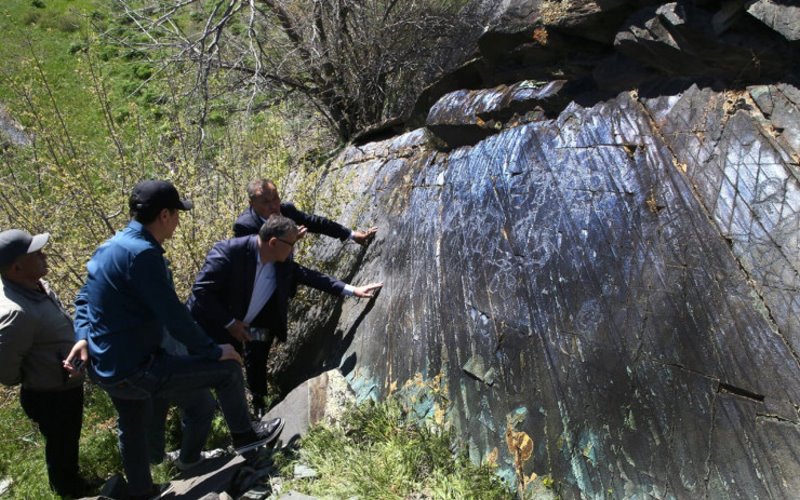
“The Karatau mountain range holds great historical and geographical significance. It is one of the unique sites of human civilization not only in the history of Kazakhstan but also in world history,” said Sauran Kaliyev, an archeologist and historian.
“We will continue our research and conduct a state examination as we intend to designate it a site of national or international significance to be included in the list of state-protected sites,” said Kuanysh Daurenbekov, director of the Directorate for the Protection and Restoration of Historical and Cultural Monuments.

